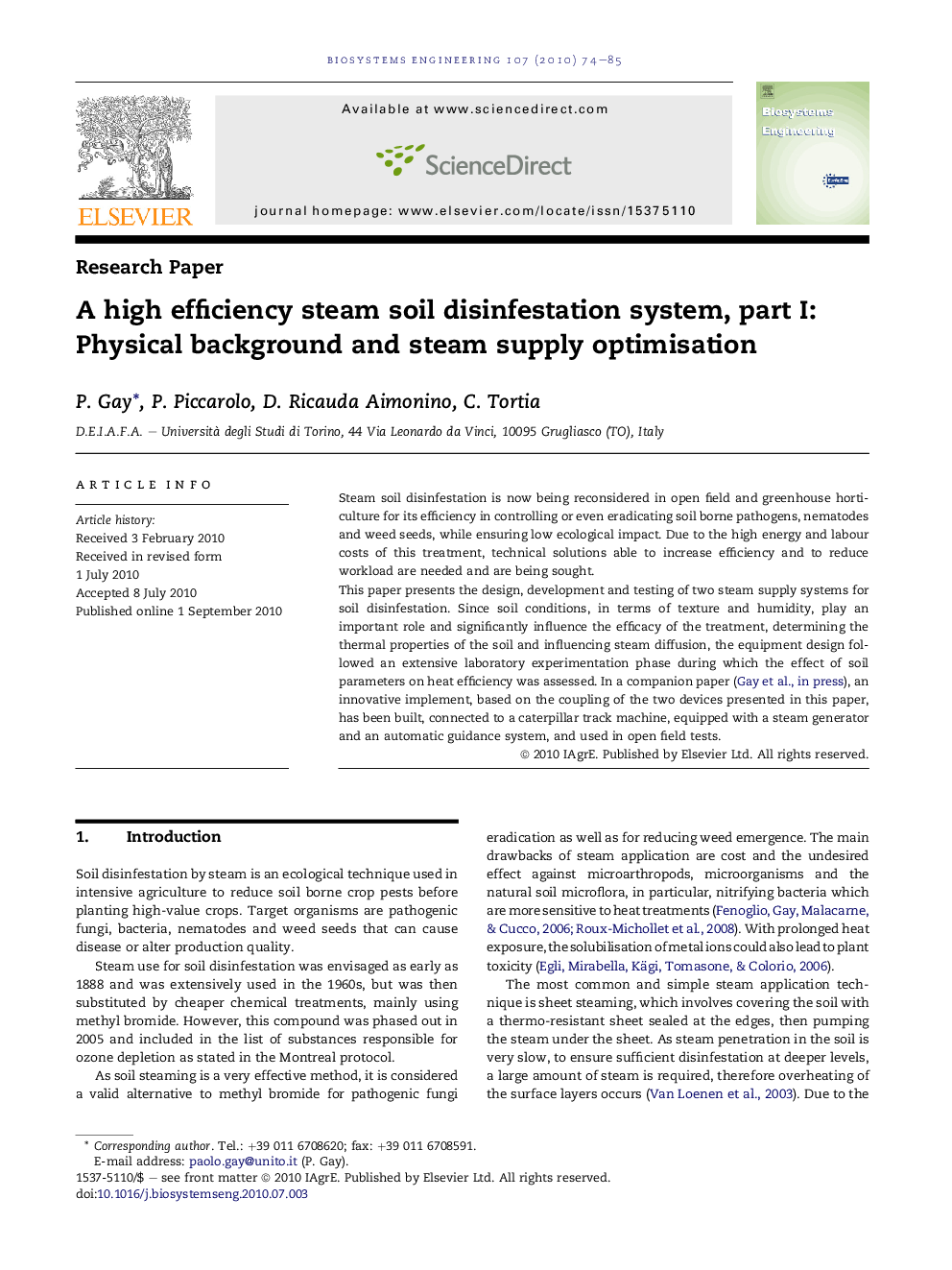| Article ID | Journal | Published Year | Pages | File Type |
|---|---|---|---|---|
| 1711878 | Biosystems Engineering | 2010 | 12 Pages |
Steam soil disinfestation is now being reconsidered in open field and greenhouse horticulture for its efficiency in controlling or even eradicating soil borne pathogens, nematodes and weed seeds, while ensuring low ecological impact. Due to the high energy and labour costs of this treatment, technical solutions able to increase efficiency and to reduce workload are needed and are being sought.This paper presents the design, development and testing of two steam supply systems for soil disinfestation. Since soil conditions, in terms of texture and humidity, play an important role and significantly influence the efficacy of the treatment, determining the thermal properties of the soil and influencing steam diffusion, the equipment design followed an extensive laboratory experimentation phase during which the effect of soil parameters on heat efficiency was assessed. In a companion paper (Gay et al., in press), an innovative implement, based on the coupling of the two devices presented in this paper, has been built, connected to a caterpillar track machine, equipped with a steam generator and an automatic guidance system, and used in open field tests.
Research highlights► Effects of soil texture and moisture content on heating efficacy during soil steaming ► Soil pasteurization by steam supplied under a sheet, hood or sub-surface injected ► Temperature spatial distribution in a steam heated bulk of soil by different techniques.
